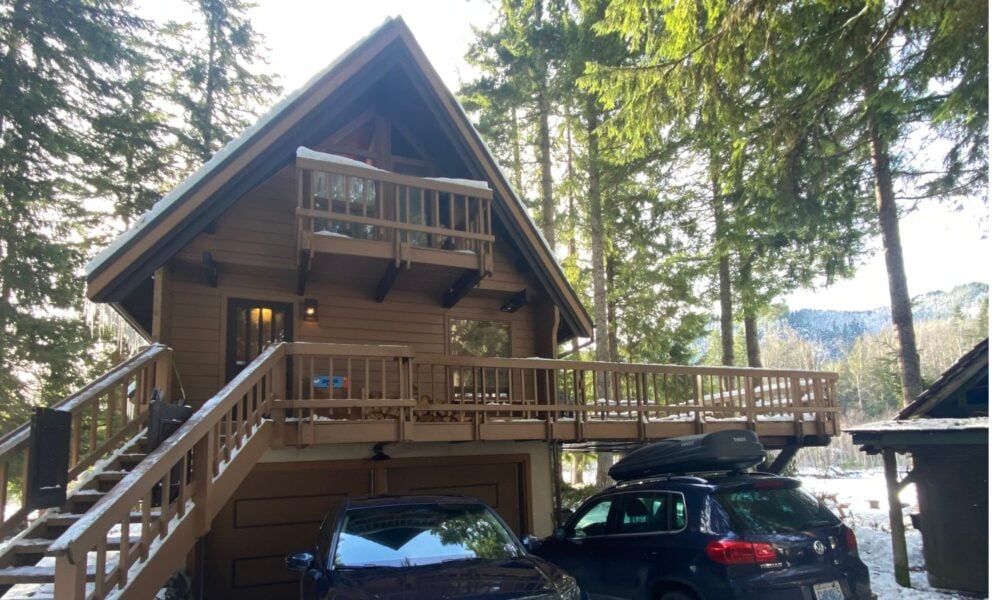I was on vacation with friends on a cold and windy January day when the power went out. It was lunchtime and we were on a ski mountain. The lights flickered, black smoke rose from the back-up generators, and hardly anyone noticed. The local utility’s website predicted that the power would be back on for the area by 4:30 that afternoon.
This experience, not far from Seattle and with ties to the information tech industry, highlights some of the issues surrounding the electric power needs of data centers. As we made arrangements to deal with this real power outage, I realized there might be a lesson to be learned about the debate over expanding energy on the grid for new data centers, or somehow building data centers with dedicated, separated energy sources.
By 4:45 PM, daylight was fading, and the utility missed its target for restoring service where we were staying. My friend’s group—several families with children aged 5-12—were sharing a house with one family to a bedroom. These folks know each other well and began preparing for the night. The kids were organized to bring firewood in for the woodstove that would heat soup for dinner, as well as the upper level of the house. A few others cleared a path and moved a heavy back-up generator from the garage to an open area to run safely.
After dinner, I walked back to my rented BnB across the main road that runs up the narrow valley. The owner, who felt compelled to tell me that he had 10 years experience with a well-known tech company, was very confident that he could keep the electric heat on in the apartment with “a small gas generator.” He was obviously oblivious to the fact that old-style electric heat (i.e. not heat pumps) requires a larger generator than he had. When he showed it to me, he picked it up with one hand like a lunch box. Imagine trying to power a surround-sound entertainment system and television with a hand-crank radio.
Regardless, he quipped “electricity is electricity,” and didn’t seem to notice that the heat wasn’t on and the lights were wobbly, at best. Suddenly, the overcrowded house with a dozen kids was more appealing. I said we’d see how things were in the morning, and I went back across the road to sleep on a couch.
Working together to stay warm—and dealing with physics
Back at my friend’s house, the kids continued to text friends or enjoy their “screen time” while the grown-ups were problem-solving things—like making coffee and heating the downstairs bedrooms with the limited generator supply. Plans for the next day included cooking burgers on the grill and making a trip for more fuel for the generator. We had someone focused on keeping people fed and someone else focused on keeping the generator running safely.
Luckily, I found a helpful role—interpreting the overall power system and sharing information. The utility’s web page reporting outages showed that power had been restored to part of the valley, and set a new goal for restoring power by the morning. We didn’t know it yet, but the outage affecting us would last much, much longer: ultimately, 45 hours.
When I returned to my cold BnB the next day to collect my things, I checked the water at the faucet. I asked the owner, who still thought I would stay, if he had turned off the water. He assured me he hadn’t: “it doesn’t require electricity!”
When I suggested that it might have frozen in the absence of operational heaters, he began to realize he had a problem. He later found a frozen, burst pipe. He explained that he would cancel my rental fees, but the peer-to-peer service company wasn’t responding to his request to cancel their fees for my rental. He eventually understood that 1) his solution was overly optimistic (e.g. not just any generator is sufficient), and 2) the rental company platform wasn’t prepared when circumstances required a change of plans.
This demonstration of the connections between people and systems, and the need for collective solutions to complicated problems, came to mind when I read about an idea for a different real estate host technology: nuclear power plant owners seeking to bring large data centers to co-locate on their land.
Modernize, or bypass, the grid?
First, some important background information. The electricity supply network of power plants, large transmission lines and smaller distribution lines—aka, the grid—has not been modernizing nearly as quickly as the technology that relies on it. In recent years, the focus of grid modernization has been on connecting new supplies. New clean energy, including combined solar and battery projects, have waited (and waited, and waited…) in interconnection queues.
More recently, demand from data center growth has focused attention on the need to upgrade the power grid. In Virginia, where data centers already account for 25% of electricity use, $627 million in grid projects were approved in 2022 to get enough power over the wires to support this “data center alley.” In 2023, grid planner PJM approved more transmission upgrades for the region, costing another $800 million.
The grid is vital to the economy and the daily lives of consumers and businesses alike. Delayed construction of clean energy means grid planners like PJM are struggling with rising demand and the loss of power plants, at significant cost to consumers. The region faces additional rate increases of 11-20% for the June 2025-May 2026 period as a result of PJM’s July 2024 capacity auction, which procured power supplies to meet future electricity demand
How are nuclear and tech responding?
One battle breaking out over how to get around this gridlock and rising costs involves nuclear plant owners striking deals with data center developers to connect directly to each other. While scores of data centers have attached to the utility transmission system, this group of tech companies is trying to avoid paying for grid services and transmission connections. This maneuver attempts to bypass the grid and the associated costs of building and maintaining that infrastructure.
PJM recently argued before the Federal Energy Regulatory Commission that these costs can’t be avoided and that it doesn’t need to change its rules to create side deals for data centers that are connected to the grid, but claim to not be attached. As PJM put it, a legal complaint of one nuclear power plant owner, Constellation Energy, is a “not-so-veiled attempt to insert one party’s preferred method for co-locating data centers with large generators… simply to suit their preferred business strategies.”
Again, physics
The IT expert with the apartment rental underestimated his need for a larger energy supply, and the vulnerability of his water supply. We all have a tendency to simplify when looking at complicated systems, but physical realities don’t conform to our shorthand descriptions. The real world is layered with connections. Often, the full situation is only apparent when something adds stress—like a power outage, for instance.
Similarly, neither nuclear power plants nor data centers have the flexibility and resilience necessary to go it alone. The premise of this battle is that these two can team up and make more money without any reliance or connection to the larger grid. But data centers, it turns out, are not steady and unwavering users of energy. They respond to instructions by very rapidly starting and stopping banks of processors that use small-city-amounts of energy. US nuclear power plants are neither currently designed nor licensed to change their output in a way that resembles this behavior of data centers. Despite the wishes or incomplete knowledge of business folks, both of these huge and expensive technologies rely on the collective functioning and shared infrastructure of those around them.
Data center start-stop functions are also more difficult to follow than a gas power electric plant can handle. The electric power supply is provided by a grid for the very purpose of spreading out the burdens of meeting variation in both supply and demand. It’s an oversimplification to point to a single generator and a single load and say: “This will serve that.” That approach requires overbuilding and accepting expenses that are unnecessary when connecting to a grid.
To stay warm
We have a complex economy that relies on interconnected technologies, many of which are enabled by the electric system. We must continue to innovate and problem-solve if we are to have a livable planet and a viable social and economic system. This won’t work if we allow social costs and risks to be forced on consumers when tech champions cut corners. There needs to be a just governance approach that reflects the importance, the complexity, and the community that depends on the electric grid.

